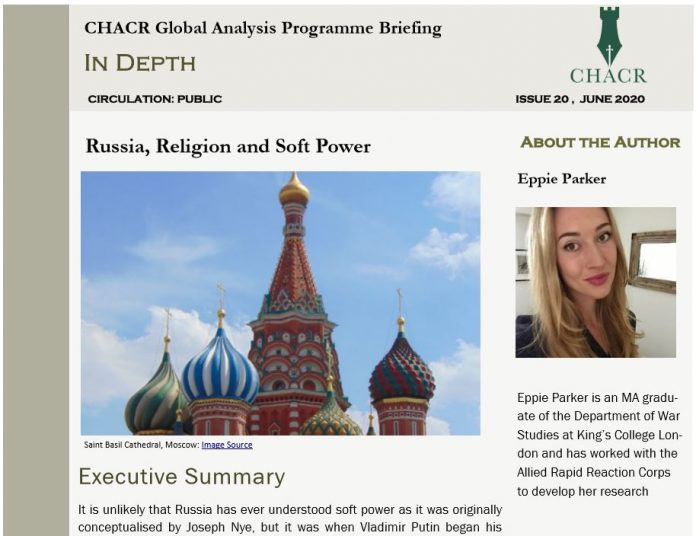Executive Summary
It is unlikely that Russia has ever understood soft power as it was originally conceptualised by Joseph Nye, but it was when Vladimir Putin began his third presidential term in 2012 that the Kremlin’s understanding of soft power markedly expanded to encompass a wide range of foreign policy ‘technologies’. It became clear that, for Russia, soft power was about achieving influence by any non-military means. This broad remit made ample space for the inclusion of offensive information operations, reflexive control techniques, and a dizzying mixture of coercion and attraction, which has come to define Russian soft power today. One of Russia’s oldest foreign policy tools, the Russian Orthodox Church, was not left out of this gear change. Today religion is both a significant feature of Russia’s soft power and a noteworthy asset in Russia’s hybrid warfare. This briefing considers how the Russian Orthodox Church, and the so-called ‘traditional values’ which it promotes, are used by Russia in its soft power/hybrid warfare nexus. After providing some historical context, it considers the nature of Russia’s religious soft power in Ukraine – before, during and after the 2014 Russian invasion – and then turns to a discussion of Russia’s increasing religious soft power footprint in the Middle East. This briefing demonstrates how, in both contexts, Russia uses religious resources to paint Western liberalism as a threat to traditional/religious values and cultural distinctiveness. By entrenching this idea in target audiences, Russia has been able to market itself as a vital protector of religion, morality, and tradition.





